This pub is the former Corn Exchange, built in 1850, the last of three exchanges on this site.
Prints and text about The Corn Exchange.
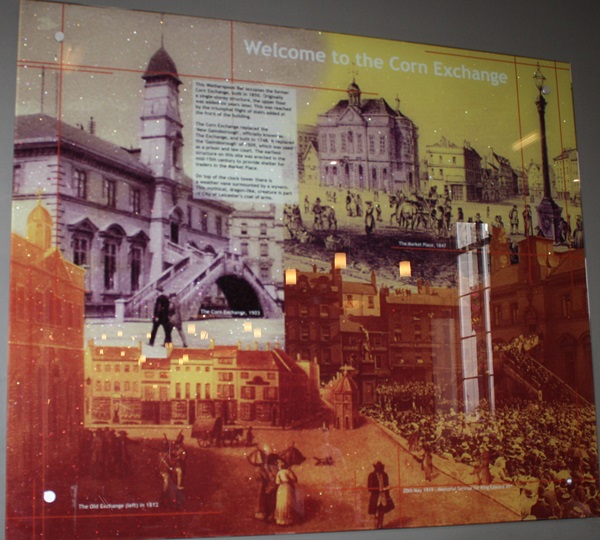
The text reads: This Wetherspoon bar occupies the former Corn Exchange, built in 1850. Originally a single-storey structure, the upper floor was added six years later. This was reached by the triumphal flight of stairs added at the front of the building.
The Corn Exchange replaced the ‘New Gainsborough’, officially known as The Exchange, and built in 1748. It replaced the ‘Gainsborough’ of 1509, which was used as a prison and law court. The earliest structure on this site was erected in the mid-15th century to provide shelter for traders in the Market Place.
On top of the clock tower there is a weather vane surmounted by a wyvern. This mythical, dragon-like creature is part of the City of Leicester’s coat of arms.
Illustrations, photographs and text about The Corn Exchange.
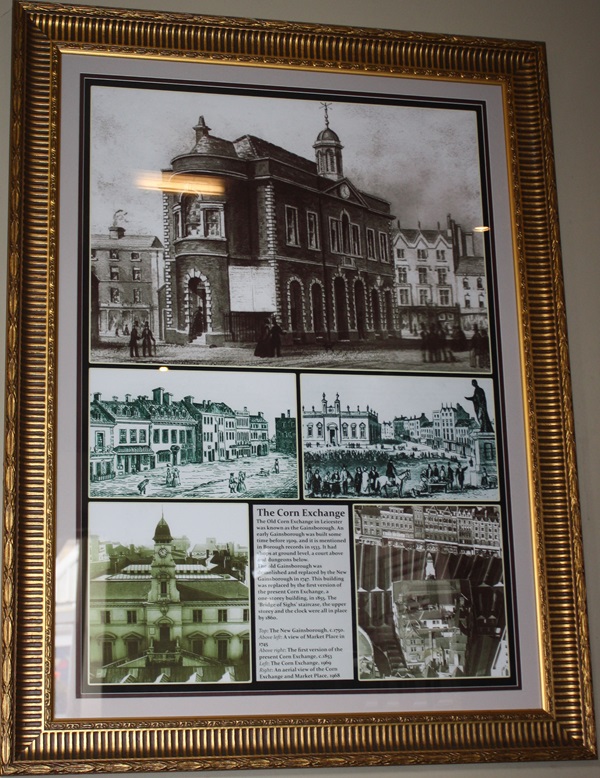
The text reads: The Old Corn Exchange in Leicester was known as the Gainsborough. An early Gainsborough was built some time before 1509, and it is mentioned in Borough records in 1533. It had shops at ground level, a court above and dungeons below.
The old Gainsborough was demolished and replaced by the New Gainsborough in 1747. This building was replaced by the first version of the Corn Exchange, a one-storey building, in 1855. The ‘Bridge of Sighs’ staircase, the upper storey and the clock were all in place by 1860.
Top: The New Gainsborough, c.1750
Above Left: A view of Market Place in 1745
Above right: The first version of the present Corn Exchange, c.1853
Left: The Corn Exchange, 1969
Right: An aerial view of the Corn Exchange and Market Place, 1968.
Photographs and text about transport in Leicester.
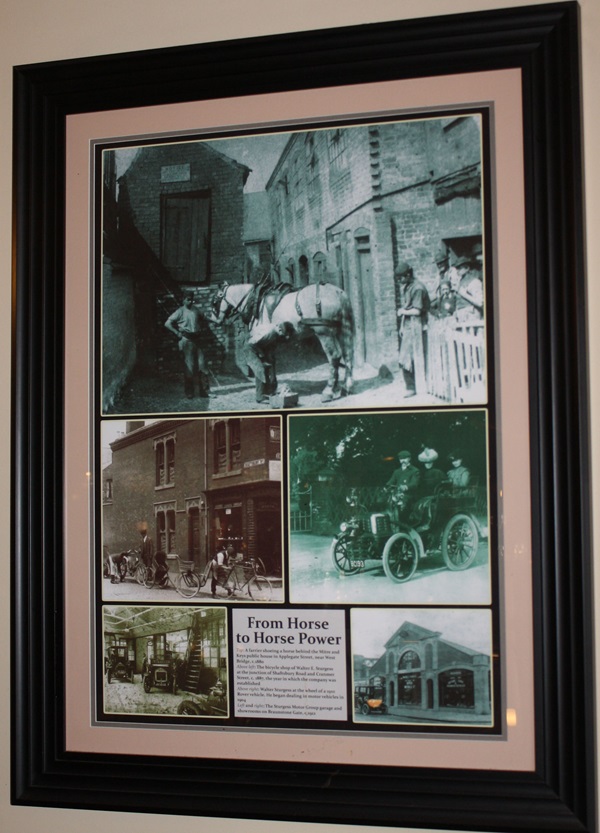
Top: A farrier shoeing a horse behind the Mitre and Keys public house in Applegate Street, near West Bridge, c.1880.
Above left: The bicycle shop of Walter E. Sturgess at the junction of Shaftsbury Road and Cranmer Street, c.1887, the year in which the company was established.
Above right: Walter Sturgess at the wheel of a 1910 Rover vehicle. He began dealing in motor vehicles in 1904.
Left and Right: The Sturgess Motor Group garage and showrooms on Braunstone Gate, c.1912.
Photographs and text about the milk industry.
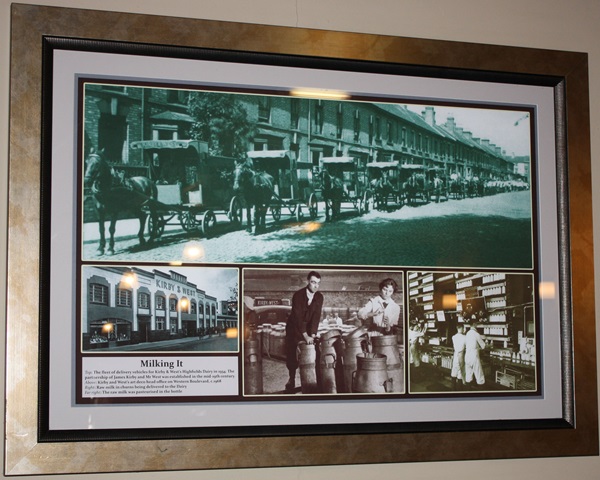
Top: The fleet of delivery vehicles for Kirby and West’s Highfields Dairy in 1934. The partnership of James Kirby and Mr. West was established in the mid-19th century.
Above: Kirby and West’s art deco head office on Western Boulevard, c.1968.
Right: Raw milk in churns being delivered to the Dairy.
Far right: The raw milk was pasteurised in the bottle.
Prints and text about the last Plantagenet.
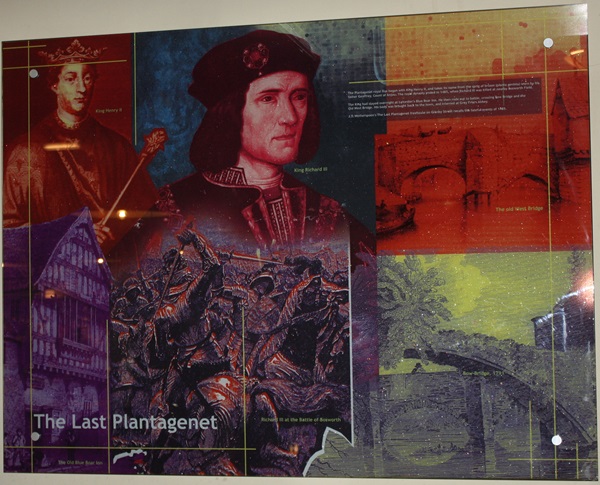
The text reads: The Plantagenet royal line began with King Henry II, and takes its name from the sprig of broom (planta genista) worn by his father Geoffrey, Count of Anjou. The royal dynasty ended in 1485, when Richard III was killed at nearby Bosworth Field.
The King had stayed overnight at Leicester’s Blue Boar Inn. He then rode out to battle, crossing Bow Bridge and the Old West Bridge. His body was brought back to the town, and interred at Grey Friars Abbey. J.D. Wetherspoon’s The Last Plantagenet freehouse on Granby Street recalls the fateful events of 1485.
Prints and text about trading in Leicester.
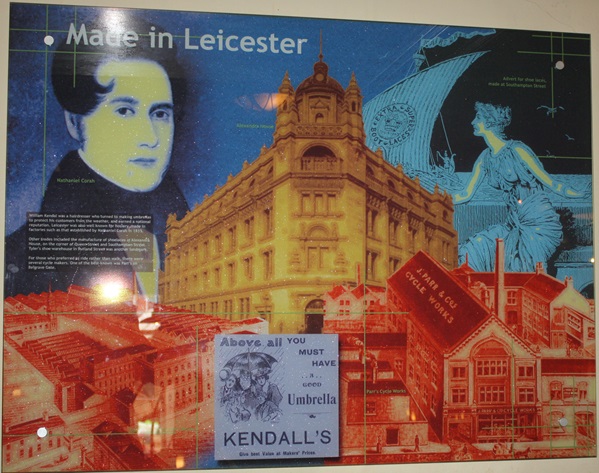
The text reads: William Kendal was a hairdresser who turned to making umbrellas to protect his customers from the weather, and earned a national reputation. Leicester was also well known for hosiery, made in factories such as that established by Nathaniel Corah in 1815.
Other trades included the manufacture of shoelaces at Alexandra House, on the corner of Queen Street and Southampton Street. Tyler’s shoe warehouse in Rutland Street was another landmark.
For those who preferred to ride rather than walk, there were several cycle makers. One of the best known was Parr’s on Belgrave Gate.
Photographs and text about law and order.
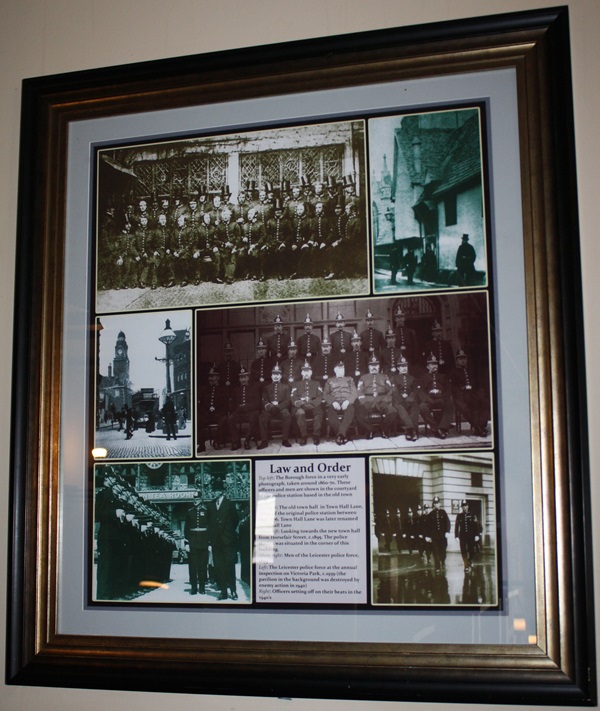
Top left: The borough force in a very early photograph, taken around 1860-70. The officers and men are shown in the courtyard of the police station based in the old town hall
Top right: The old town hall in Town Hall Lane, home of the original police station between 1836-1876. Town Hall Lane was later renamed Guildhall Lane
Above left: Looking towards the new town hall from Horsefair Street, c.1895. The police station was situated in the corner of this building
Above right: Men of the Leicester police force, 1899
Left: The Leicester police force at the annual inspection on Victoria Park, c.1939 (the pavilion in the background was destroyed by enemy action in 1940)
Right: Officers setting off on their beats in the 1940’s.
Illustrations and text about the siege of Leicester.
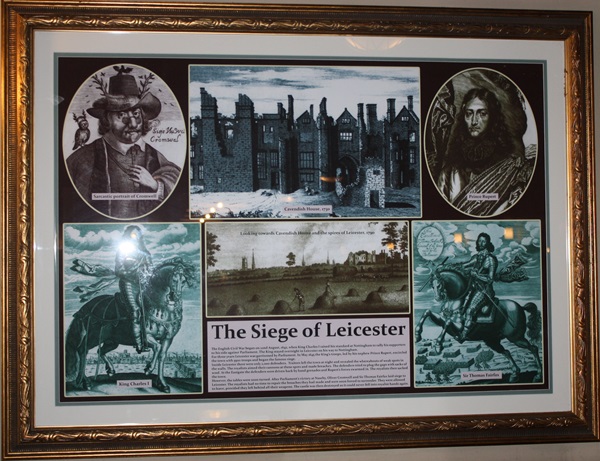
The text reads: The English Civil War began on 22nd August, 1642, when Charles I raised his standard at Nottingham to rally his supporters to his side against Parliament. The King stayed overnight in Leicester on his way to Nottingham.
For three years Leicester was garrisoned by Parliament. In May 1645 the King’s troops, led by his nephew Prince Rupert, encircled the town with 5500 troops and began the famous siege.
Inside Leicester there were only 2,000 defenders. Traitors left the town at night and revealed the whereabouts of weak spots in the walls. The Royalists aimed their canons at these spots and made breaches. The defenders tried to plug the gaps with sacks of wool. At the Eastgate the defenders were driven back by hand grenades and Rupert’s forces swarmed in. The Royalists then sacked the town.
However the tables were soon turned. After Parliament’s victory at Naseby, Oliver Cromwell and Sir Thomas Fairfax laid siege to Leicester. The Royalists had no time to repair the breaches they had made and were soon forced to surrender. They were allowed to leave, provided they left behind all their weapons. The castle was then destroyed so it could never fell into royalist hands again.
Illustrations and text about Leicester Abbey.
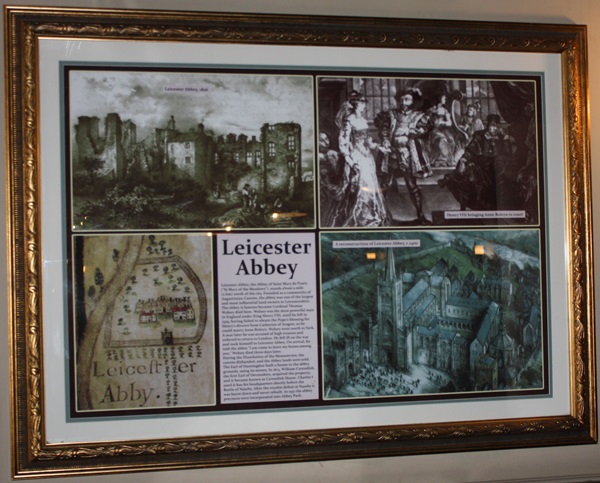
The text reads: Leicester Abbey, the Abbey of Saint Mary de Pratis (“St Mary of the Meadows”), stands about a mile (2km) north of the city. Founded as a community of Augustinian Canons, the abbey was one of the largest and most influential land owners in Leicestershire. The abbey is formed because Cardinal Thomas Wolsey died here. Wolsey was the most powerful man in England under King Henry VIII, until he fell in 1529, having failed to obtain the Pope’s blessing for Henry’s divorce from Catherine of Aragon, so he could marry Anne Boleyn. Wolsey went north to York. A year later he was accused of high treason and ordered to return to London. He fell ill on the way and took himself to Leicester Abbey. On arrival, he told the abbot “I am come to leave my bones among you”. Wolsey died three days later.
During the Dissolution of the Monasteries, the canons disbanded, and the Abbey lands were sold. The Earl of Huntingdon built a house in the Abbey grounds, using its stones. In 1613, William Cavendish, the first Earl of Devonshire, acquired the property, and it became known as Cavendish House. Charles I used it as his headquarters shortly before the battle of Naseby. After the Royalist defeat at Naseby it was burnt down and never rebuilt. In 1931 the abbey precincts were incorporated into Abbey Park.
Photographs of the Market Place.
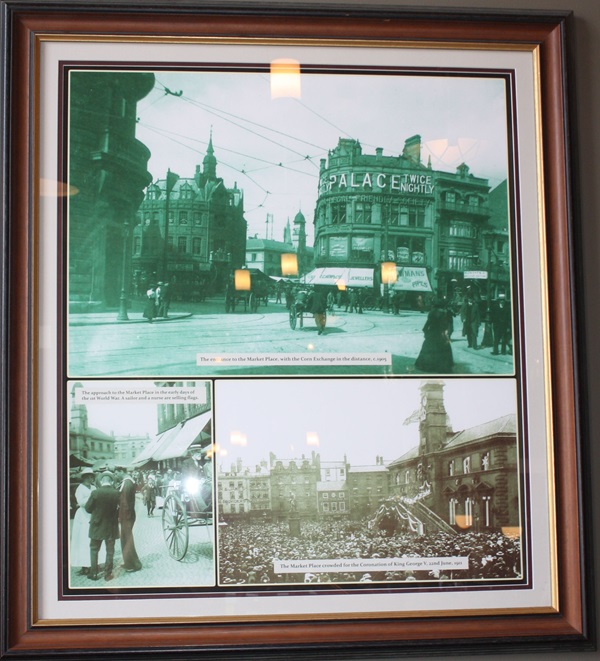
Above: The entrance to the Market Place
Left: The approach to the Market Place in the early days of the 1st World War. A sailor and a nurse are selling flags.
Right: The Market Place crowded for the Coronation of King George V, 22nd June 1911.
Photographs of events outside the Corn Exchange.
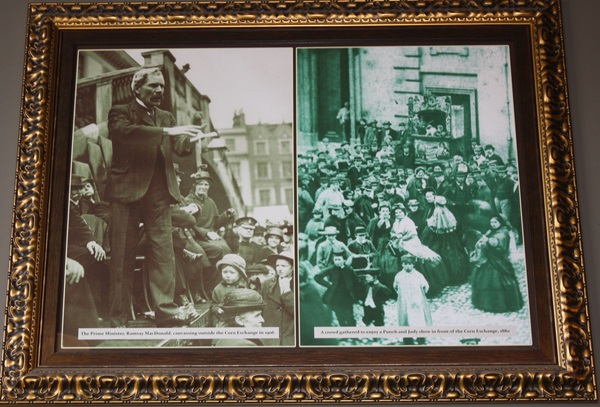
Left: The Prime Minister, Ramsay MacDonald, canvassing outside the Corn Exchange in 1906
Right: A crowd gathered to enjoy a Punch and Judy show in front of the Corn Exchange, 1880.
A photograph of Eastgate, c.1890.
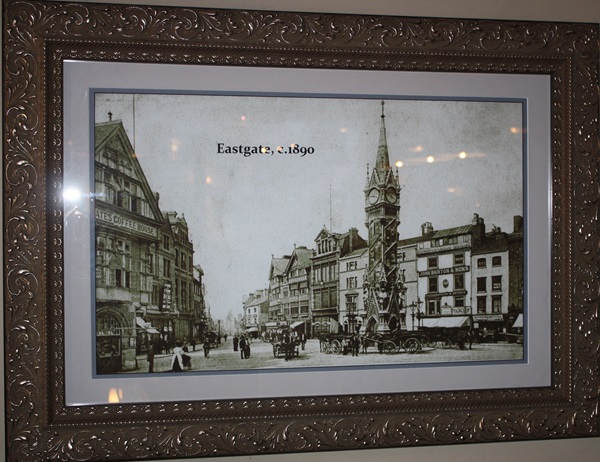
A photograph of the Clock Tower and Haymarket, c.1910.
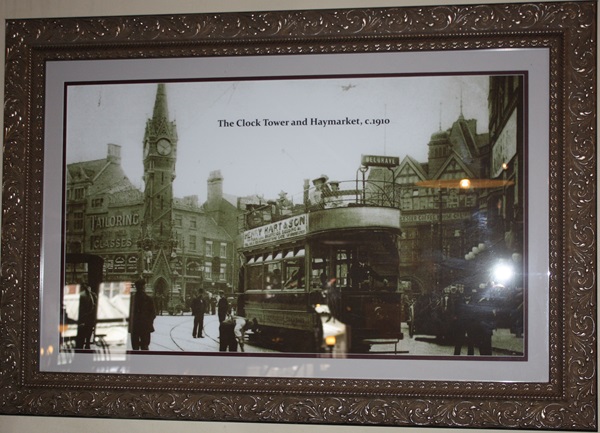
A photograph of High Street from the Clock Tower.
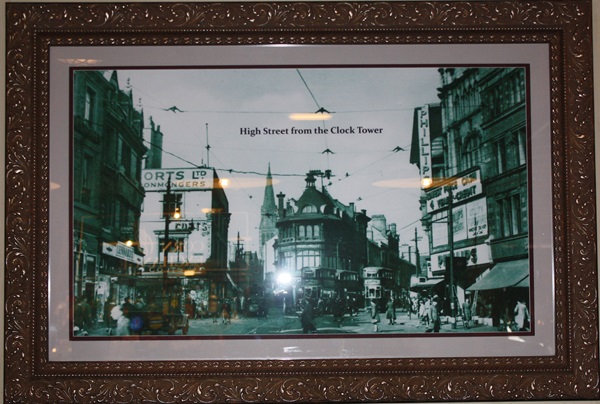
A photograph of Victoria Station.
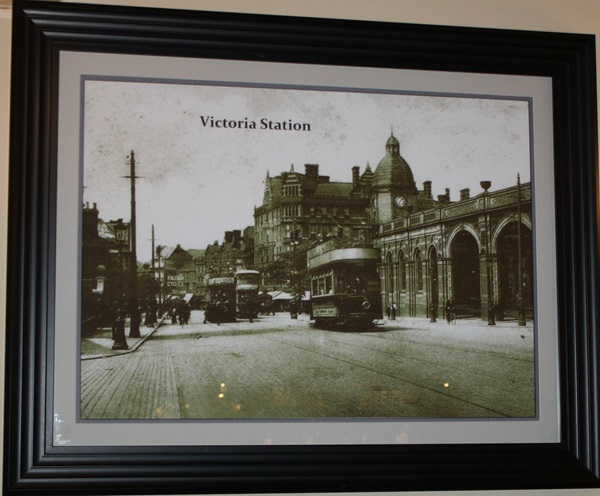
A photograph of the Clock Tower, Eastgate.
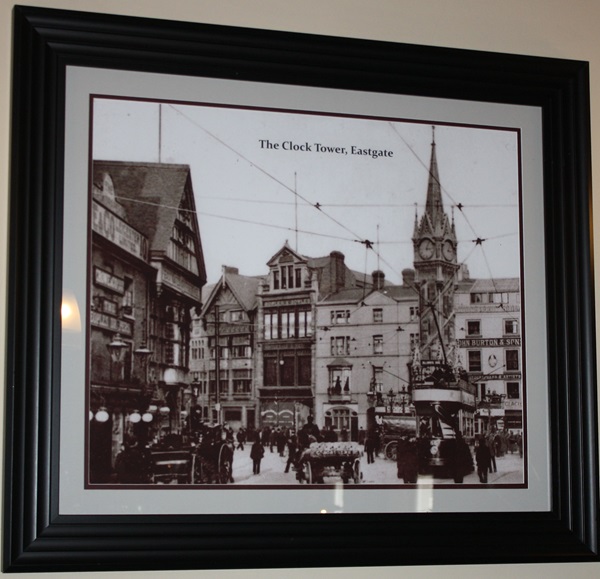
A photograph of the Corn Exchange and Market Place, c.1900.
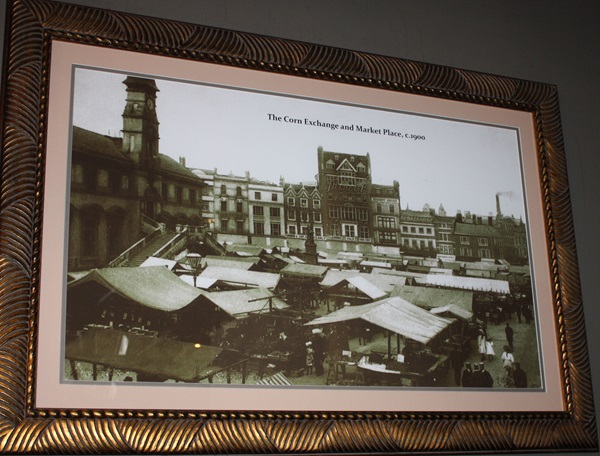
External photograph of the building – main entrance.
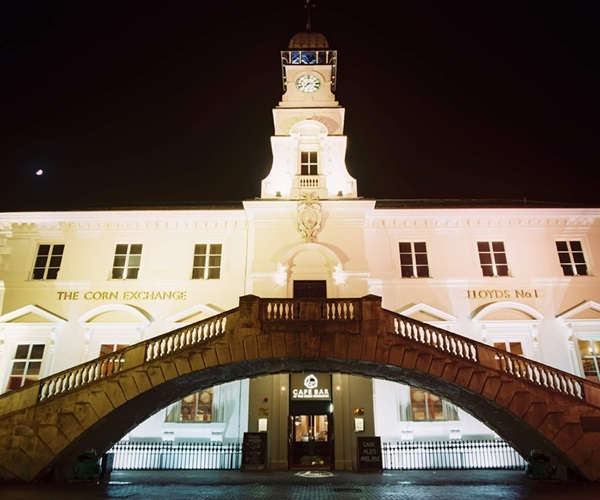
If you have information on the history of this pub, then we’d like you to share it with us. Please e-mail all information to: pubhistories@jdwetherspoon.co.uk